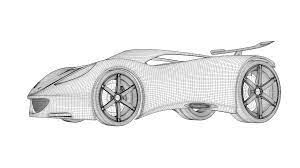In the world of product development, prototyping plays a pivotal role in turning innovative ideas into tangible realities. A prototype serves as a preliminary version of a product, providing valuable insights and feedback before full-scale production. In this article, we will explore the significance of prototyping, its benefits, and the different types of prototypes used in various industries. From reducing risks and costs to refining designs and enhancing user experiences, prototyping is a vital step that propels successful product development.
- Defining Prototyping:

Prototyping involves creating a scaled-down model or representation of a product, allowing designers and engineers to visualize and test its features, functionality, and aesthetics. It serves as a bridge between conceptualization and production, enabling stakeholders to refine and validate the product’s design, functionality, and user experience. Prototypes can range from simple mock-ups to fully functional models, depending on the development stage and requirements.
- Reducing Risks and Costs:
One of the primary benefits of prototyping is risk mitigation and cost reduction. By creating a proto-type, potential flaws, design issues, and usability concerns can be identified early in the development process. This enables necessary modifications and refinements to be made before investing significant resources in mass production. Detecting and addressing issues during the prototyping stage minimizes the risk of costly redesigns, production delays, and customer dissatisfaction.
- Iterative Design and Improvement:
Prototyping allows for an iterative design process, enabling continuous improvement and refinement. As proto-types are tested and evaluated, feedback is gathered from stakeholders, users, and usability experts. This feedback helps identify areas for improvement and informs subsequent design iterations. The iterative nature of prototyping ensures that the final product meets user expectations, aligns with business goals, and delivers optimal performance and user experience.
- Enhancing User Experience:
User experience (UX) is a critical factor in the success of any product. Prototyping provides an opportunity to assess and optimize the user experience before production. Through user testing and feedback, designers can identify usability issues, gauge user satisfaction, and make necessary adjustments. By incorporating user-centered design principles during the prototyping stage, products can be tailored to meet user needs, preferences, and expectations, resulting in enhanced user experiences and increased customer satisfaction.
- Stakeholder Communication and Alignment:
Proto-types serve as powerful tools for effective communication and alignment among project stakeholders. They provide a tangible representation of the product concept, facilitating clearer communication of design intent, functionality, and features. Proto-types enable stakeholders to visualize and understand the product’s potential, align their expectations, and provide valuable input. This collaborative process enhances teamwork, reduces misunderstandings, and ensures that everyone is on the same page throughout the product development journey.
- Testing and Validation:

Prototyping allows for rigorous testing and validation of product concepts, functionalities, and performance. By creating functional proto-types, engineers can assess technical feasibility, identify potential engineering challenges, and validate design assumptions. Usability testing with realistic proto-types provides valuable insights into user behavior, preferences, and pain points. This iterative testing and validation process helps refine and optimize the product’s design, functionality, and performance, increasing the likelihood of a successful market launch.
In conclusion, prototyping plays a pivotal role in product development, transforming abstract concepts into tangible realities. By providing a physical representation of ideas, prototypes serve as a powerful tool for testing, refining, and validating designs before mass production. They enable designers and engineers to visualize and assess the feasibility, functionality, and aesthetics of their creations, identifying potential flaws and making necessary improvements early in the development process.
Prototyping offers numerous benefits, such as reducing the risk of costly errors and rework, accelerating innovation by facilitating iterative design cycles, and fostering effective communication and collaboration among multidisciplinary teams. It allows stakeholders to gain a deeper understanding of the product, align their expectations, and make informed decisions based on tangible evidence.
Furthermore, prototypes serve as valuable marketing tools, enabling businesses to showcase their ideas and garner feedback from potential customers. This early engagement helps in identifying market demands and preferences, ensuring that the final product meets the needs and desires of its intended users.
While prototyping does require investment in terms of time, resources, and expertise, the long-term benefits far outweigh the initial costs. The ability to mitigate risks, improve product quality, and enhance user experiences makes prototyping an indispensable step in the product development journey.
In a world driven by innovation and consumer demands, the power of prototyping cannot be underestimated. It bridges the gap between imagination and reality, allowing ideas to flourish and evolve into successful products. By embracing prototyping as an integral part of their processes, businesses can unleash their creativity, push boundaries, and ultimately deliver exceptional solutions that make a difference in the lives of their customers.